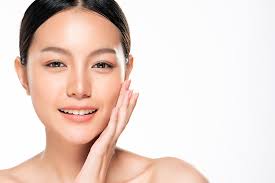
Can I use Bakuchiol and Retinol?
There are always a lot of questions about retinol, admittedly it is the most confusing skincare ingredient out there and takes some research into finding out its correct application. There’s no denying how affective it is at combating signs of ageing and concerns with blemishes. Retinol is not the only product that can deliver these sort after results, Bakuchiol has gained a lot of praise in recent years for providing the same effects for the skin, without the side effects. With both ingredients benefiting the skin in various ways you wouldn’t be considered foolish in wondering if you can use Bakuchiol and retinol in the same routine, this is exactly the question we plan on investigating today.
What is Bakuchiol?
Considered to be the natural and vegan alternative to retinol, Bakuchiol is found in the leaves and seeds of the Psoralea corylifolia plant with connections in Chinese Medicine that date back centuries. This potent skincare ingredient carries an abundant amount of benefits for the skin. Packed with antioxidant properties Bakuchiol can help reduce the appearance of fine lines and wrinkles, pigmentation to the skin which is a result of sun damage as well as other environmental exposure.
Adding Bakuchiol into your everyday skincare routine is easy and can be applied once or twice a day after cleansing. If the product you are using is a serum than it is best to apply this before your moisturiser on clean skin and teamed with either an AHA or BHA leave on product to aid skin exfoliation. Ideally to reap the rewards of using Bakuchiol it should be in oil form and used in the evenings, not forgetting to use a SPF in the mornings to protect from sun exposure.
What are the benefits of Bakuchiol?
The main benefits of Bakuchiol are as follows;
Bakuchiol helps to reduce the appearance of fine lines and wrinkles
Bakuchiol can help restore the firmness of the skin
Bakuchiol can refine skin texture giving the skin a smoother complexion
Bakuchiol helps with uneven skin tone
Bakuchiol is more soothing to the skin than retinol and is a good option for those with more sensitive skin
You may also find Bakuchiol is used in anti-blemish products with its soothing and calming properties to the skin it can aid a problematic older skin with active spots and also showing the first signs of ageing. To find out more about this rather clever ingredient and its skincare benefits over on our dedicated blog post.
What is Retinol?
Retinol is a form of vitamin A and is the holy grail of skincare ingredients. Its popularity in the beauty industry has gathered huge amounts of fans from the experts to skincare addicts. What makes retinol so good for your skin is down to its ability to deliver outstanding results for the skin from fine lines, to combating spots. When it comes to using retinol there are a number of things to take into consideration due to the fact there are a lot of different products available at various strengths. You can find out more about which percentage to use on our post, what is the most effective form of retinol.
There are products enriched in vitamin A that are available over the counter and through prescriptions, and to avoid any skin irritation, rashes or redness to the skin start on the lowest strength of either 0.25% or 0.5% and slowly build your skin’s tolerance to stronger percentages. If you are ever feeling unsure about using a product seek the advice of your GP or a dermatologist to ensure the product is best for you and your skin.
What are the benefits of retinol?
Here are the main benefits of using retinol;
Retinol can help treat and clear spots and blemishes
Retinol helps to clear the pores and reduce their visibility
Retinol helps increase cellular turnover
Retinol can increase collagen production and promote elasticity
Retinol decreases any hyperpigmentation
Retinol can diminish and prevent any fine lines and wrinkles
You can understand why this ingredient is considered a superhero when it comes to skincare and its ability to benefit the skin in many ways. We cannot forget the precautions when it comes to using it and if you are wanting to know more about what retinol is and what its skincare benefits are.
Can you use Bakuchiol and retinol together?
Believe it or not Bakuchiol and retinol can be used together, and in fact, are considered a highly effective duo. This is due to the calming properties of Bakuchiol you will find retinol has the ability to work better without causing the same amount of irritation to the skin. The most commonly heard advice when using these products is to use Bakuchiol if you find your skin to be too sensitive to the potency of retinol. By teaming retinol and Bakuchiol together you would be creating a powerful, yet more gentle, formula of an anti-age fighting, blemish-battling, skincare routine. With Bakuchiol being the natural partner to retinol you may find your skin is left looking healthier, smoother and brighter without any signs of redness or dry patches to the skin that are very often the side effects of using retinol on its own.
What are the benefits of using Bakuchiol and retinol?
Here are some of the top benefits of using these two skincare ingredients together;
Bakuchiol has been scientifically proven to stabilise retinol and other skin-replenishing ingredients making it easier for the skin to absorb
Bakuchiol has soothing properties and can help the skin tolerant the potency of retinol and potentially avoiding any signs of skin sensitivity and flaking
Bakuchiol allows retinol to work for an extended amount of time due to it supporting the ingredient before the presence of light and air breaks down the strength of retinol
Bakuchiol is a highly potent antioxidant that works together with the matching properties of vitamin A protecting the skin from any signs of environmental aggressors
You may now have a clearer understanding of these two ingredients and their skincare benefits, you will also have the peace of mind that combining them in your routine has any negative effect on the skin. You will find you have notable firmer, brighter looking skin with wrinkles and blemishes significantly reduced. One very important step to remember in your routine is to always apply a daily broad spectrum SPF of 30 and above to protect the skin from harmful and skin damage exposure to UV rays.
Don’t forget to come and check out our Instagram for new product launches, daily tips and videos! Don’t miss out on more skincare tips and expert advice over on our YouTube channel! Come and find us on The Green Sofa by hitting the subscribe button, you won’t regret it!


